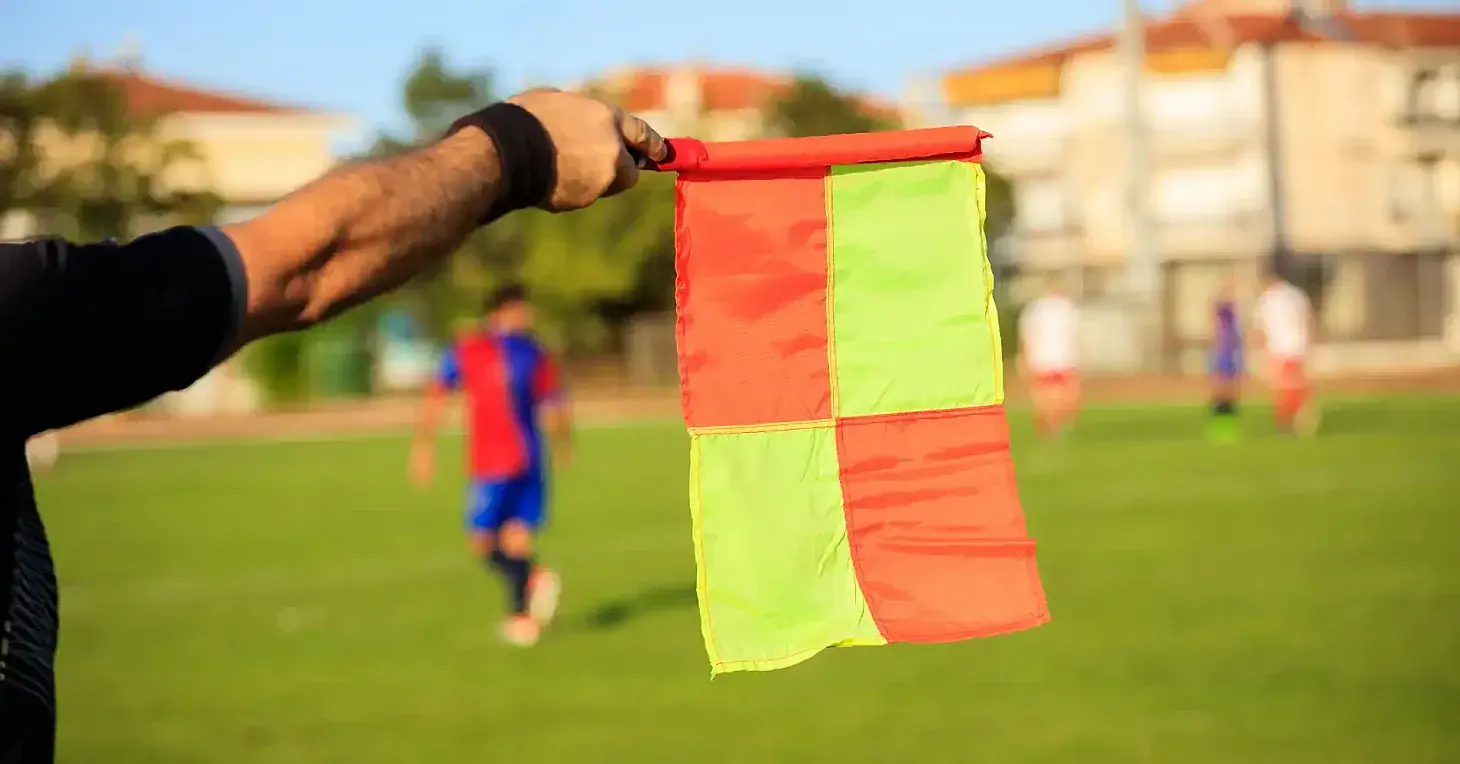Offside in Football
The offside rule has its roots in the 19th century. Early forms of football had varying rules depending on the location. The rule most closely resembling today’s offside was first mentioned in the Cambridge Rules of 1848. These rules stated that a player could not receive the ball if they were closer to the opponent’s goal line than the ball, unless at least three opponents were between them and the goal.
Codification of the Rule
In 1863, with the founding of the Football Association (FA) in England and the publication of the first official football rules, the offside rule was formalized. At that time, three opponents had to be between the attacking player and the opponent’s goal line for the player not to be offside.
Changes in the 20th Century
The rule underwent several modifications over time to make the game smoother and more engaging. A significant change occurred in 1925, when the required number of opposing players was reduced from three to two. This adjustment had a major impact on how football was played, leading to an increase in the number of goals scored.
Introduction of Passive Offside
In the 1970s, the concept of passive offside was introduced. It distinguished between players actively involved in play and those in an offside position but not interfering with play. This refinement made the rule more complex but also fairer.
Technological Developments
With the advent of new technologies, enforcing the offside rule became more precise. Systems such as the Video Assistant Referee (VAR) and automated offside technologies were introduced in the 21st century to assist referees in decision-making.
Current Rule
Today, a player is penalized for being in an offside position only if they actively participate in play by playing the ball, interfering with an opponent, or gaining an advantage from their position. The current definition has made the game faster and more offensive, allowing greater creative freedom for attacking players.
Basic Principle
A player is in an offside position if they are nearer to the opponent’s goal line than both the ball and the second-last opponent at the moment the ball is played to them by a teammate. It’s important to note that a player can be in an offside position without being penalized. A penalty occurs only if the player actively interferes with play while in that position.
Active Involvement
A player is deemed to be actively involved in play if they:
- Play the ball that was passed to them by a teammate while in an offside position.
- Interfere with an opponent, such as blocking their view or preventing them from reaching the ball.
- Gain an advantage by playing a ball that rebounds to them from a post, an opponent, or another situation.
Situations Where Offside Does Not Apply
- Own Half of the Field: A player cannot be offside if they are in their own half of the field.
- Goal Kick, Throw-in, Corner Kick: Offside is not called during these specific situations.
- Ball Played by Opponent: If the ball is deliberately played by an opponent, the offside rule does not apply.
Assessment and Enforcement
The decision regarding offside is made by the assistant referee positioned along the sideline observing the players. In professional games, this is often supported by technologies like the VAR system.
Strategic Significance
The offside rule has a significant impact on football tactics. Teams must carefully time their attacks to avoid offside, while defenders often use the rule to catch attackers offside by quickly stepping up to reduce the space behind them.
This rule requires a high level of attention and tactical understanding from players and referees alike, contributing to the dynamic and engaging nature of the game.
Passive Offside in Football
Passive offside is a concept often misunderstood but crucial to the offside rule. A player is in a passive offside position if they meet the offside criteria but do not directly interfere with play or influence the game.
Definition of Passive Offside
A player is in passive offside if they:
- Are nearer to the opponent’s goal line than both the ball and the second-last opponent but
- Do not actively interfere with play.
No Active Interference
A player in a passive offside position is not penalized unless they actively interfere with play. Active interference includes:
- Playing or touching the ball passed by a teammate.
- Influencing an opponent by obstructing their view, preventing them from reaching the ball, or otherwise interfering with play.
- Gaining an advantage by playing a ball that rebounds from a post, an opponent, or a teammate.
Referee’s Judgment
The decision about whether a player in passive offside should be penalized lies with the referee and their assistants. They assess whether the player in the offside position influenced play.
Examples of Passive Offside
- A player in an offside position does not play the ball or influence an opponent.
- A player near the ball clearly does not intend to play it.
- A player moves back from an offside position to avoid involvement in active play.
Importance for the Game
The passive offside concept allows players to be in an offside position without unnecessarily stopping the game. This promotes a smoother flow but can lead to disputes regarding whether a player influenced play.
Passive offside requires a thorough understanding of the rule and its application by referees, players, and spectators. It is an essential part of modern football, ensuring fairness and dynamism in the game.

